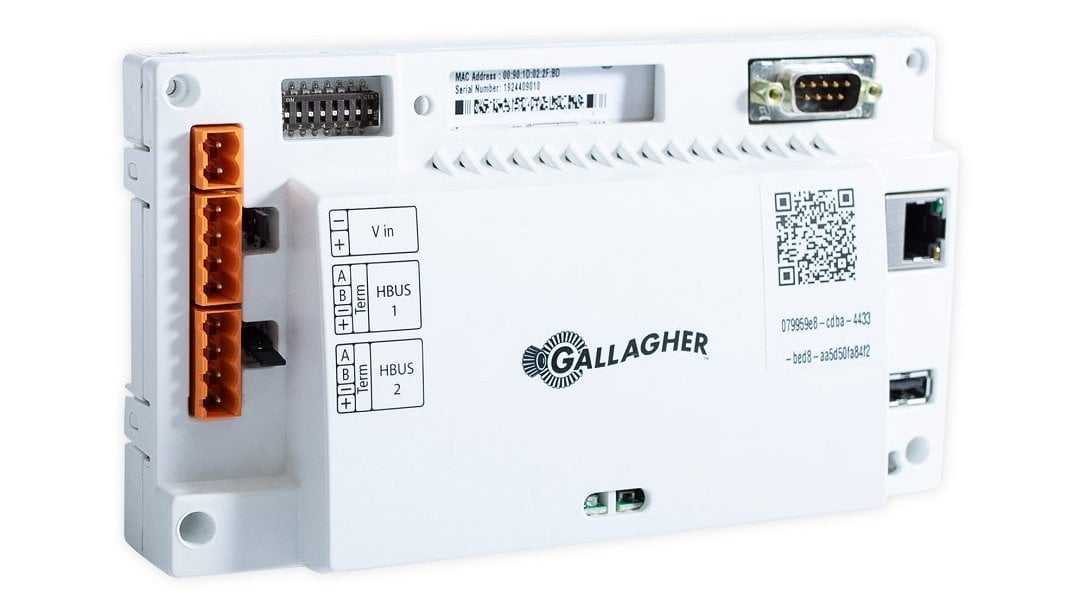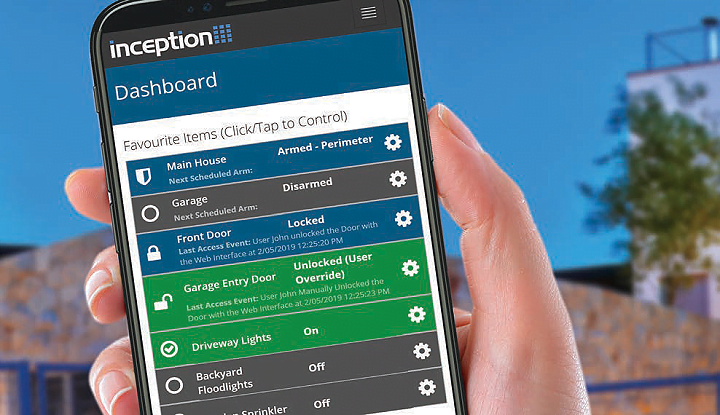Affordable access control solutions used to limit integrators and end users to scant functionality, local management and reduced levels of security. The digital revolution has changed all that.
Only 20 years ago, a simple access control solution was a basic affair – even if expansion was possible, there was plenty of functionality that simply wasn’t there. These days affordable access control solutions use novel approaches to deliver performance that once reserved for the big end of town – customisable reporting, remote management, high tech authentication technologies and integration with CCTV and other sub systems out of the box.
According to Don Tummillo of SFERE Group Australia, remote accessibility is key in today’s environment, allowing the issuing of credentials to users without the need of face-to-face contact.
Tummillo says clever reporting functions and remote management put big system features into affordable packages.
“Reporting is fundamental in all access control systems – that is the core reason behind having a system in the first place,” he says. “Automatically generated reporting is another key need, as it allows end users to have reports presented in a format that’s easy to manage by business operators.”
Tummillo argues cloud is a game changer in the SME market and he says it offers many advantages over stand-alone installations.
“Cloud is an absolute game changer in many cases,” he says. “Firstly, all data is stored and backed up to cloud. Security companies with technicians no longer need to install specific software on laptops and computers and ensure that software versions are compatible with computer hardware.
“Also, when technicians leave their employment with a security company, management can immediately remove their access to the cloud service, preventing them from accessing the company’s customer base.”

From the point of view of installers and integrators, which are the key considerations around function, system design and configuration, presence of local support, in Tummillo’s opinion?
“Installers and integrators require full programming accessibility remotely of an access control system, including remote system diagnostics to ensure the system is fully functioning before dispatching a technician to the customer’s premises,” Tummillo says. “Being able to support an installer remotely while implementing a new system reduces lost time and frustration.
“Hybrid systems, such as hardwired/wireless access control when implementing a system design is also important to an installer – cabling to doors or external gates, boom gates, can be challenging. Having a system that allows technology also enhances affordability because running cables is expensive.
“Remote management and commissioning are some of the most powerful features of cloud access control systems – a cloud-based system should provide full system control, programming, commissioning, system implantation, immediate changes and system diagnostic resources to remote users.”
Something installers and integrators taking the cloud route will need to get their heads around is the process of managing a database in the cloud – that includes finding a secure, local cloud provider partner, according to Tummillo.
“It’s a critical requirement that cloud partners are fully compliant with the Australia requirements for cloud database management, and have a complete IT system cloud implementation infrastructure design in place with acceptable redundancy,” Tummillo says.
And when it comes to the best affordable access control read/authentication choices offering high security, low contact and low cost, Tummillo favours personal smart devices.
“Mobile app access readers mean staff don’t need to touch anything other than their own personal mobile device,” he explains. “Range is also extended, allowing devices to be used away from the door, to allow a cleaner or delivery person access. Bluetooth, QR Codes are also very useful, but you need a mobile device for these. If you decide on contactless readers, a dual reader which allows users without a smart phone to access the premises may be the preference.”
What is it about SFERE’s affordable access control solution that makes it uniquely well suited to affordable access control applications?
“ProDateKey (PDK) access control is an anytime, anywhere, any device solution, that has the ability to take over access control systems without replacing the already installed readers and credentials,” Tummillo explains. “It has the ability to manage the entire system remotely and issue credentials to individual users directly to their mobile device and authenticate them remotely.
“This means saving installation time and travelling time – there’s PDK’s Proavtive Alert sent to users, managers, and integrators on system matters and or issues. Wireless connectivity products integrated within our system, offering high security readers if required, automatic cloud software updates, new features automatic ally available, importing of PDF floor plans directly on our platform with full reader/device location and interactive control and many more cost-effective features.”
Gallagher’s Steve Bell says a cloud-based access control system has a number of benefits for the SME market.
“SME customers have a smaller footprint, often with 50 or less people working at any one facility,” he explains. “It’s important that the administration of their security system; and the ability to add, edit, or remove staff and contractor access; is simple and not limited to one PC on the administrator’s desk, or worse still, undertaken by interacting with the system at an alarm keypad.
“A cloud-based system will securely allow those with an administrator role to make required changes on a web browser from either their laptop or mobile phone. Remember that often one owner may have several businesses across multiple sites. For example, a franchise chain of outlets is standalone in its own right, but may need to be managed together from one app. A cloud-based access control system can achieve this, providing increased flexibility and convenience for business owners.”
For those using a cloud-based app for their security, there is an expectation for the user experience to be excellent, Bell says.

“Listening to the frustrations of those using older, standalone access control systems, it’s clear a cloud approach brings wide-ranging benefits to help make their lives easier,” he says.
Do the cap-ex/op-ex numbers of cloud access add up, in Bell’s opinion?
“Many SME’s will be running several of their business functions in a cloud environment – Xero’s accounting system is a great example, where the SME’s administrator will manage the system without the worry of backups or other maintenance,” Bell explains.
“It is simple to get the accountant to have a look at the accounts and offer advice, all without the cost of a site visit. The same applies to a cloud-based access control system. If any support is required, a quick call to the installer and they can log in and help solve the problem quickly and easily, usually without an expensive call out.
“So, when we are considering the op-ex costs of cloud-based access control systems, it is totally aligned to the benefits the technology provides compared to the challenges and frustrations of standalone systems and the ongoing onsite maintenance that comes with them.
“Often a cloud-based access control system will have an upfront capital cost for the initial purchase and installation of the hardware. But there are times an installer or manufacturer is happy to remove the upfront cost and include it into the ongoing subscription or finance charge over a defined period. Some SMEs will appreciate the removal of the upfront cost and move these to sit within their operational expenses.”
What is it about Gallagher’s solution that makes it uniquely well suited to affordable access control applications?
“Gallagher security for small to medium business (SMB) has been designed from scratch to meet the needs of smaller businesses,” Bell says. “A simple, yet powerful user interface, via a mobile phone app, allows users to arm and disarm alarms, manage incidents, and monitor users – both onsite and remotely.
“You can choose to monitor the system yourself, connect to your existing monitoring company, or even have it connected directly to a guarding company. If you have several SMB operations, the multi-site feature allows you to have all of your SMB facilities combined into one view, in the same app. There’s also no need to worry about cyber security, software updates, or backups – it’s all done for you.”

Over at Inner Range, Steve Mitchell argues that the key functionalities of affordable access control solutions include ease of access and ease of control – these mean system users can be maintained as the company grows – and he says flexible programming options allow solutions to be customized to user needs.
“Accessible remote management for configuration and control are core to any solution, regardless of the size,” says Mitchell. “This is especially true for remote phone access, either via apps or a responsive web interface.”
“Ease and speed of installation, simple remote connectivity for maintenance (especially those which eliminate most site visits), customizable programming options to tailor the solution to a customer’s needs, accessible tech support, both at the distributor and manufacturer level, are all strong features.”
Mitchell is not convinced cloud is a game changer in the SME access control market.
“Solutions like Inner Range Inception are better suited to SME markets, in my opinion, as the entire system is located in a self-contained controller on-site,” he says.
“SkyTunnel allows all the benefits of an on-site standalone solution, while facilitating simple remote management. The user gets the same experience, whether they are at the office or at home, and don’t need to pay an ongoing subscription.
“I would argue that cloud can be complementary to those sorts of solutions – for instance, the free SkyTunnel platform that assists with remote access and control when using Inception. Something else to consider is that SMEs often don’t have the internet, networking, or IT infrastructure in place to support a pure cloud solution.”

Regardless, Mitchell sees remote management for users and remote commissioning for installers as being useful functionalities.
“Often the commissioning is done on-site in conjunction with testing of the physical hardware,” Mitchell says. “Cloud connectivity can make this easier though, as a phone can be used to assist with the configuration and testing. And for ongoing maintenance cloud can drastically reduce the time and effort to resolve issues or alter configuration remotely.”
#sen.news









